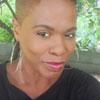Cupping

Cupping is a traditional ancient Chinese medicine that involves placing bamboo, plastic, or glass jars on the skin, creating a vacuum by suctioning out the air. It is believed that, as the underlying tissue is sucked and raised into the cup, it enhances circulation, relieves pain, and pulls out toxins. The practice receives a lot of attention when athletes post images on their social media pages with rings on their backs that resemble bruising.
I spoke with Dr. Anne Mok, who practices Traditional Eastern Medicine at Cornerstone Healing in Brooklyn. Dr. Mok treats sports injuries, including carpal tunnel syndrome, herniated disks, various sprains and strains, and tendonitis.
Karim Orange: How do you use cupping in your current practice?
Dr. Anne Mok: During the consultation, depending on what they are coming for and what their constitution is, that is when we will decide whether cupping is appropriate. If their constitution is more of a weaker nature, then we will not do cupping. Cupping is considered a more aggressive form of treatment.
KO: How many types of cupping are there, and what are the differences?
AM: There are several for different reasons.
Stationary cups - cups are just placed on the body without movement.
Sliding cups - after applying a liniment, then the cups are slid over the body parts. This can be more intense than stationary cups.
Bleeding cups - using a lancet to prick a certain area and then quickly place the cup over it.
Flash cupping - cupping that is quickly placed on the skin but not retained but is repeated several times in that area or down a limb. Commonly used in stroke patients.
Depending on what people are coming in for, that is when we will decide which type of cupping to use. More commonly we would do sliding cupping first and then leave the cups stationary afterwards. Bleeding cups are more specific and are used more in cases of swelling, like on the knees.
KO: What are some of the ailments you like to use cupping for?
AM: I like to use cupping for pain, swelling, colds, and congestion.
KO: It was very popular during the Olympics. Why do you think this was?
AM: It was popular in the Olympics because these athletes train their muscles to the max, therefore causing stagnation. Also, it can heal injuries faster by decreasing inflammation. It can also help loosen up the muscles.
KO: Can cupping be used for stress?
AM: Stress can appear in many ways. If someone is holding a lot of tension in their muscles or they are constipated, then, yes, cupping can help. Cupping releases heat and stagnation from the body and sometimes this stagnation can manifest in insomnia, anxiety, constipation, and a whole array of emotions.
KO: How many sessions do you usually recommend, and can it be done solo or only in conjunction with acupuncture?
AM: Cupping can be done alone or in conjunction with acupuncture or massage. In our practice, we recommend both together. I wouldn’t do cupping at each treatment, especially if the marks are very dark. I would wait for the marks to subside, then do it again. If the marks are less dark then there is less stagnation or inflammation. It’s also used as an assessment tool.
KO: Is there anything else someone should know before they think about trying cupping?
AM: Cupping has been around for thousands of years and used in many different cultures. You can use glass, plastic, or bamboo to do cupping. Gua sha, or commonly known as scraping, is like cupping but used in areas like the neck or top of the shoulders. Some areas that are not flat are better to use Gua sha on. I have used Gua sha for a stiff neck and it’s very effective.
Now that you know more about this traditional way of healing the body, is this something you would try?
Karim Orange
Karim Orange is a two-time Emmy-nominated makeup artist and green beauty expert, specializing in clean beauty, makeup, and skincare. She is an active urban farmer who advocates for quality food, regardless of social economics. She enjoys traveling cross-country by train and sharing stories with others along the way. Follow her blog at thatgirlorange.com.
Don't Miss a Thing!
Get the latest articles, recipes, and more, when you sign up for the tasteforlife.com newsletter.

